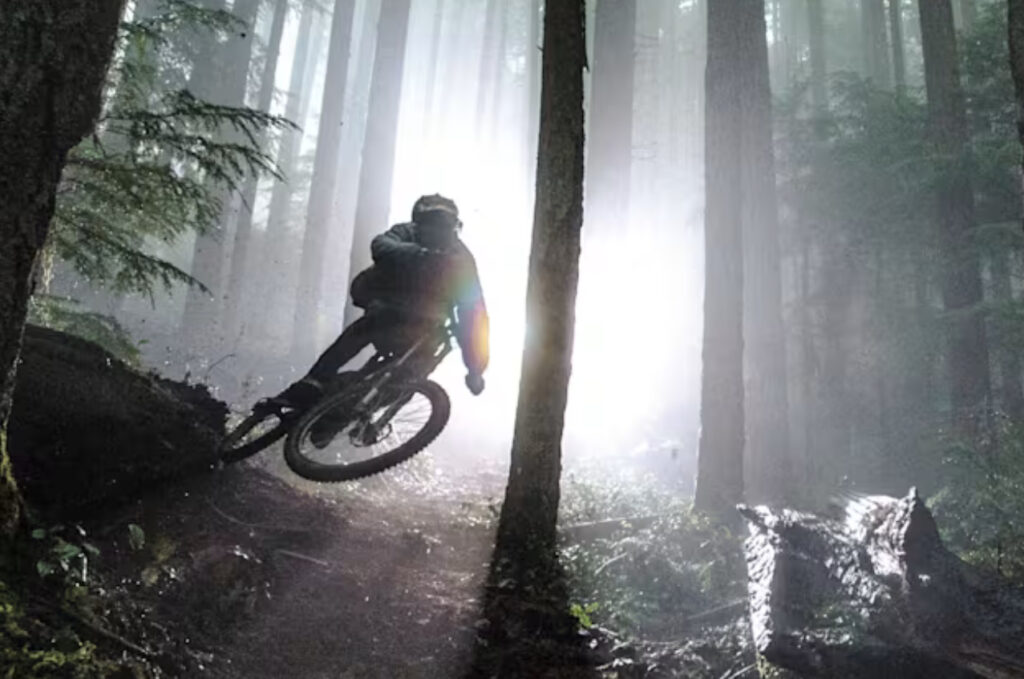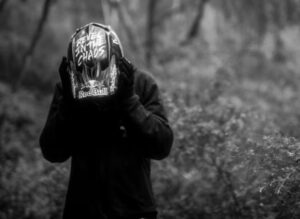In the world of freeride mountain biking, few names resonate as profoundly as Brandon Semenuk’s. A pioneer of precision, style, and innovation, Semenuk has consistently defied expectations, turning rugged trails and gravity itself into his canvases. Yet, even for a rider so deeply synonymous with progression, Revel In The Chaos—a short film directed by Rupert Walker—stands out as a singular work of art. Released as both a celebration and a meditation on the exhilarating unpredictability of freeride culture, the film elevates the genre into a domain that feels closer to modern dance or high art than extreme sport.
In Revel In The Chaos, we witness not just a showcase of athletic prowess but an immersion into controlled anarchy, where chaos is not something to be avoided but embraced. The film is at once furious and serene, precise and wild, and above all, profoundly human in its depiction of one man’s intimate relationship with risk, terrain, and imagination.
The Anatomy of Controlled Chaos
At first glance, Revel In The Chaos might appear like an adrenaline-fueled highlight reel—jumps that seem impossible, turns that defy physics, and landscapes that look almost alien. Yet what sets this film apart is its deep intentionality. Every frame is considered, every sequence builds on the last, developing a visual symphony that captures the layered textures of Semenuk’s riding style.
Director Rupert Walker, long-time collaborator and visionary behind many of Semenuk’s most iconic projects, doesn’t just point the camera at action; he orchestrates it. Cinematography flutters between frenetic close-ups and wide, almost meditative landscapes. Drone shots skim impossibly close to Semenuk’s rear tire before soaring upward to reveal the immensity of the terrain. The pacing of the editing mimics the rhythm of the ride itself—moments of breathless speed punctuated by sudden silences, as if the Earth itself holds its breath.
Every decision reinforces the central thesis: chaos is beautiful, but only when mastered.
Brandon Semenuk: The Silent Virtuoso
One of Semenuk’s defining traits—often overlooked in the hyperbolic language of extreme sports journalism—is his restraint. Unlike many athletes whose charisma shines brightest in interviews or public appearances, Semenuk’s magnetism lies almost entirely in motion. He speaks sparingly in Revel In The Chaos (and indeed, throughout his career), allowing his bike to serve as his primary voice.
This reticence lends the film an ethereal quality. Without explanatory dialogue or heavy-handed narration, we are left to infer meaning from the movement itself. Semenuk doesn’t perform for the camera; he exists within it. His riding isn’t about domination or brute strength; it’s about an elegant, almost balletic negotiation with the natural world.
Even in moments of supreme difficulty—impossible-seeming backflips spun over rocky gullies, split-second adjustments made on vertical descents—there’s a calmness to his demeanor. It’s not the absence of fear but the complete acceptance of it, a lesson in vulnerability as much as in bravery.
The Soundscape of a Storm
A significant portion of the film’s emotional depth comes not from the visuals alone but from its sound design. Traditional high-energy sports films often lean on blaring soundtracks, but Revel In The Chaos chooses a more nuanced approach.
At times, there’s a minimalistic musical score—a muted electronic hum, a distant echo of guitar strings—that amplifies the visual tension without overpowering it. In other moments, the soundtrack falls away entirely, replaced by the visceral sounds of tires scraping dirt, the hiss of brakes, the raw thud of landing. These moments ground the film, reminding viewers that despite its dreamlike beauty, every jump is real, every impact absorbed not just by the bike but by the rider’s body.
By allowing space for silence, Revel In The Chaos communicates an emotional authenticity rare in its genre. The chaos is not external; it lives within the heartbeat of the rider and the breath of the mountain.
Terrain as Muse and Menace
The landscapes chosen for Revel In The Chaos are characters in their own right. Rugged, unforgiving, and breathtakingly beautiful, they oscillate between welcoming and threatening Semenuk’s advances. Here, the terrain isn’t a backdrop—it’s an active participant in the narrative.
Each location represents a new form of conversation: soft dirt whispering under wide tires, jagged stone roaring in resistance, snowmelt streams murmuring warnings. Semenuk’s task is not to conquer these spaces but to collaborate with them, finding the hidden lines and silent opportunities they offer.
There’s something deeply poetic in watching him navigate a sun-scorched ridge one moment and a rain-drenched forest the next. Each environment reveals a different facet of chaos, a different kind of revelation. Together, they create a living, breathing world that feels indifferent yet somehow intimately connected to the rider’s journey.
Legacy Etched in Dust and Film
While Revel In The Chaos stands on its own as a cinematic achievement, it also forms part of a larger narrative about Semenuk’s career and his broader impact on mountain biking culture.
Long before this film, Semenuk had already solidified his legend status with multiple Red Bull Rampage wins, groundbreaking contest runs, and viral video segments that reshaped what was possible on two wheels. Yet here, he sheds the competitive veneer entirely. There are no medals to be won in Revel In The Chaos, no judges to impress. The stakes are internal, personal, existential.
In choosing to focus on chaos not as an obstacle but as a partner, Semenuk speaks to a deeper truth about mastery in any discipline: real excellence isn’t about controlling everything; it’s about thriving when nothing is controllable.
In this sense, Revel In The Chaos isn’t just a short film about mountain biking. It’s a meditation on artistry, risk, and the fragile, fleeting nature of perfection.
A Template for Future Storytelling
What Semenuk and Walker achieve with this film will likely ripple outward, influencing not just the next generation of freeriders but also filmmakers, artists, and creatives across disciplines. It redefines what a “sports film” can be, blurring the lines between action and emotion, between movement and meditation.
The film’s impact is particularly potent at a moment when the world seems obsessed with speed and spectacle. Revel In The Chaos offers a counterpoint: slow down. Feel the grit under your wheels. Recognize that beauty often lies in the precarious moments between control and surrender.
As mountain biking continues to evolve—with ever more daring tricks, newer technologies, and increasingly global reach—the lessons embedded in Revel In The Chaos will endure. They remind us that no matter how advanced the equipment or how spectacular the stunts, the heart of the sport remains profoundly simple: a human being, a bike, a line through the unknown.
The Hustle
In the end, Revel In The Chaos leaves us not with a sense of conquest, but with a feeling of communion. With terrain. With risk. With ourselves.
Brandon Semenuk’s artistry, Rupert Walker’s visionary direction, and the raw, untamed landscapes together create something far more lasting than any record or trophy could offer. They create a world where chaos isn’t a threat to be managed, but a source of meaning to be embraced.
To revel is not merely to survive. It is to dance in the debris, to find rhythm in disorder, to smile into the oncoming storm. In a world increasingly obsessed with control, Revel In The Chaos dares to offer another way forward: not resistance, but revelry.
No comments yet.








